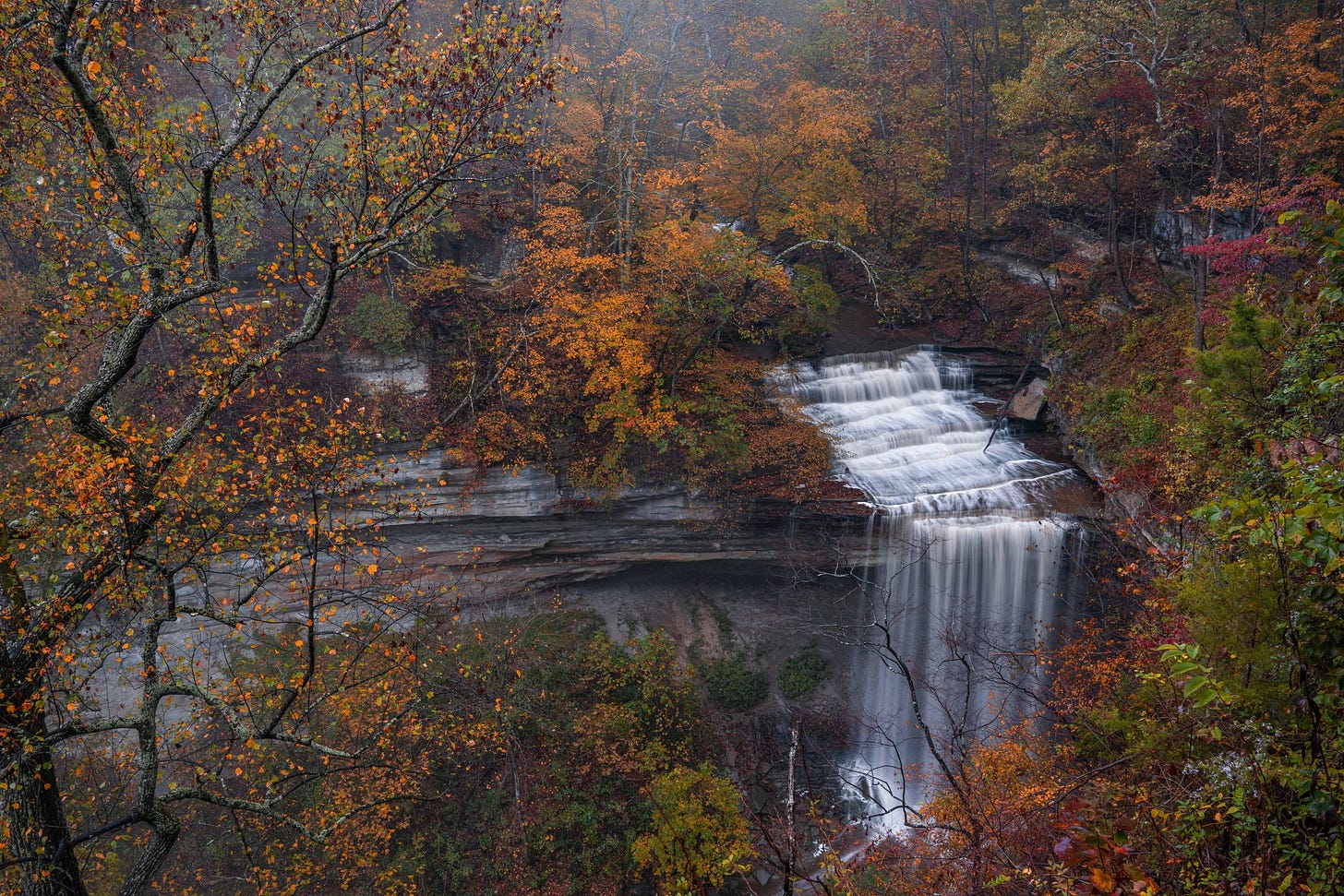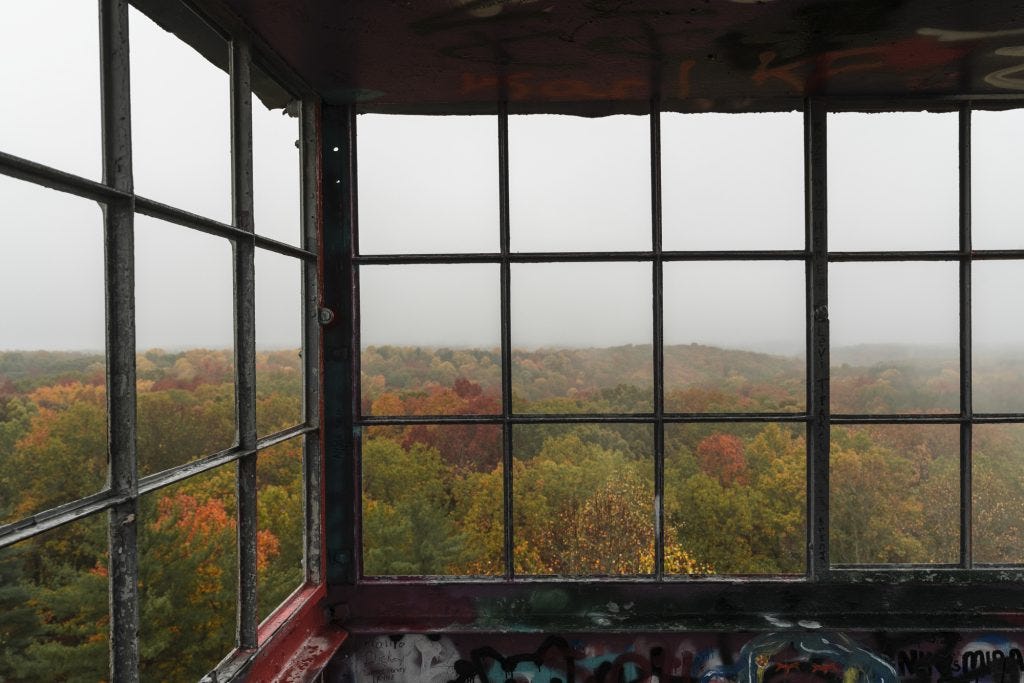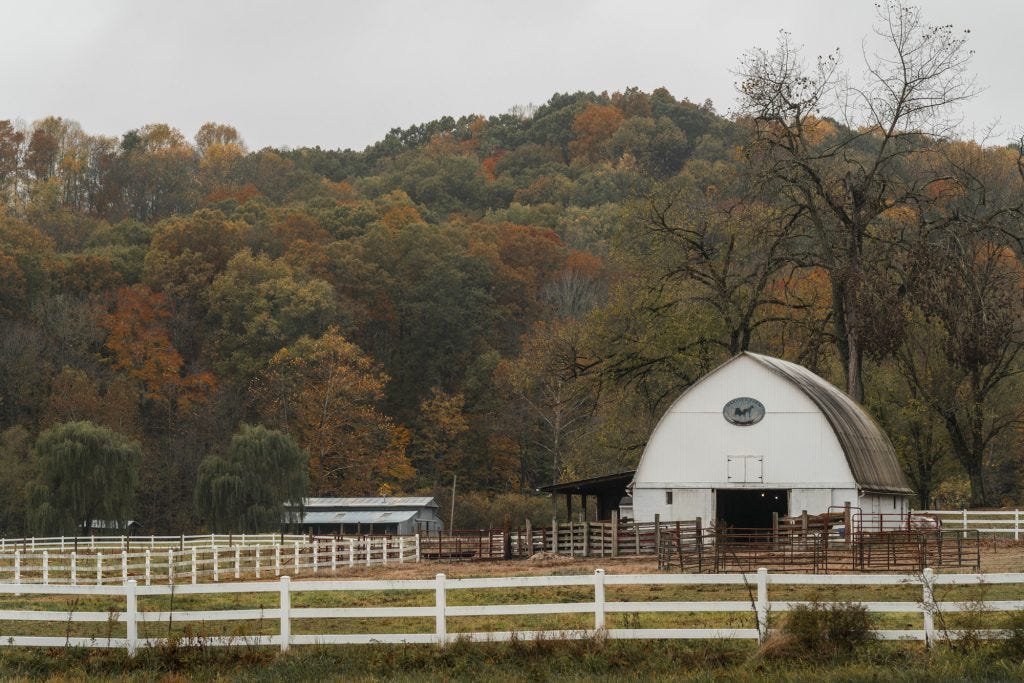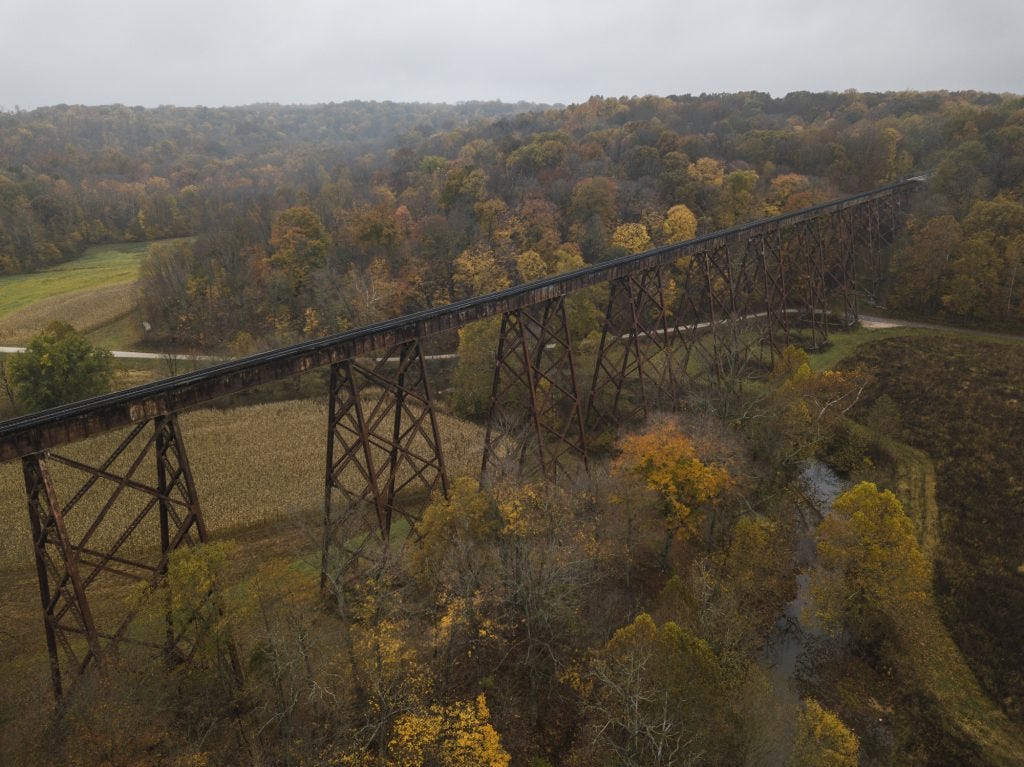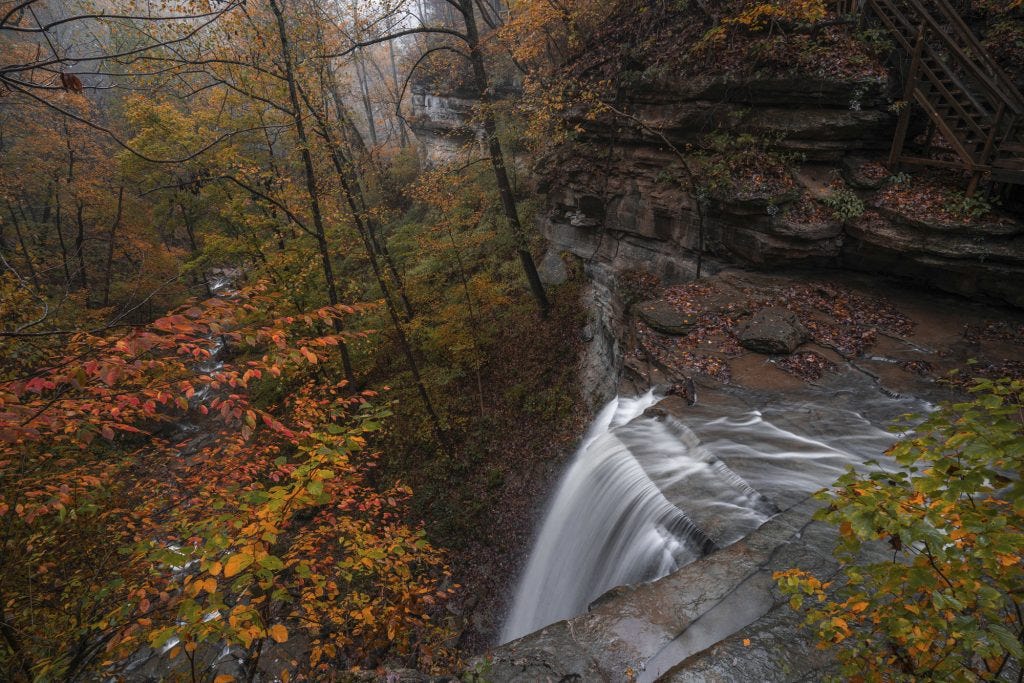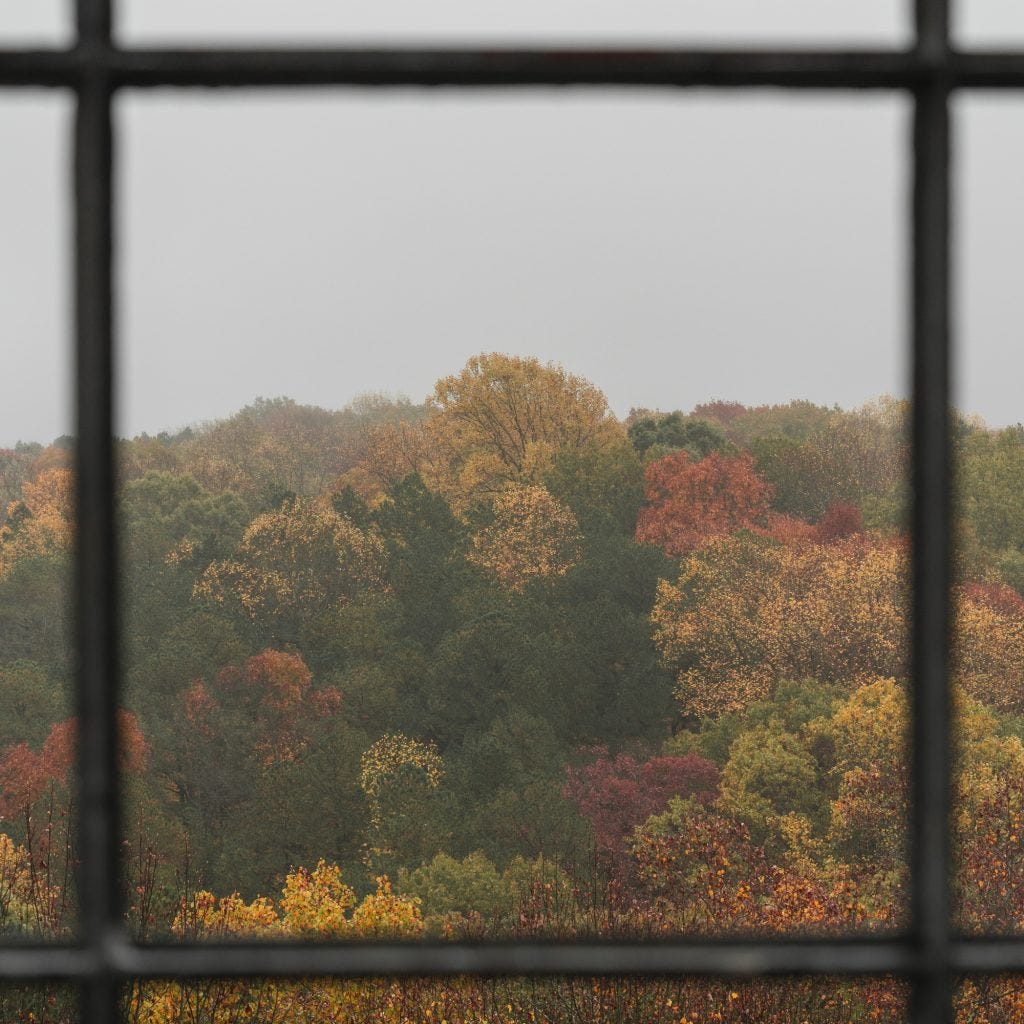Chasing Color: A Photographer's Fall Foliage Adventure
I became familiar with Daniel Woody’s work well before I became familiar with the man behind the camera. There’s no shortage of good photography on Instagram, but his work includes those elements that take photos from good to great.
It’s not enough to be in the right place at the right time, and be technically proficient. At minimum, you need a grasp of the narrative, composition that goes beyond the rule of thirds, and restraint when the editing software says “turn it up.” Woody has all this in spades, and more.
The timing was right and we decided his first work for the magazine would be a series of fall foliage photographs, ideally at its peak. Woody has become somewhat of an expert on the pursuit of fall color, and – in addition to the photos – I wanted to document his experience shooting as well.
The following is a wide-ranging conversation between Woody and I about his 2020 leaf season, gratuitously decorated with the dramatic results of his efforts.
[This is part one of a two-part series. The second will focus on the technical aspects of the photography. Also, these photos are available as prints, framed prints and on canvas at the Sportsman Store.]
- Ben Shadley // Editor
BRS: You really committed this year. How many nights and days did you spend shooting this season, and how many miles did you drive?
DW: I probably dedicated about 10 full days and nights to photographing fall color. Just around Indiana, I traveled roughly over 1000 miles, with about 22hrs total driving time
BRS: Where did you go?
DW: I visited quite a few places around Indiana, but not all of them had the type of foliage or conditions needed for good fall color photos.
I went to Cliffs of the Seven Double Pillars, Shades State Park, a few covered bridges, Portland Arch, Williamsport Falls, Sundance Lake, Maine’s Pond, Brown County State Park, Rock Rest Falls, Clifty Falls State Park, Story, IN, Hickory Ridge Lookout Tower, Tulip Trestle, McCormick’s Creek State Park, and Cataract Falls.
BRS: When did you end up doing most of your shooting, and how did you make the decisions on where to go, and when?
DW: I shot from October 13th to October 24th. Color change in trees typically follows a North to South pattern, so I decided to take the same approach when deciding on where to go and when. I chose my specific locations based on what types of subjects I could include in the photo (natural or man-made features) that would complement the fall color.
BRS: Is it strictly capturing great photos that motivates you, or do you enjoy the “chase” as much as the photography?
DW: The “chase”, or the “adventure” as I call it, is really what motivates me. Of course, the goal is to always come home with a beautiful image, but I’ve had many outings where I’m just exploring and I never pick up the camera. I never know what kind of day I’ll have, but it’s always one of two options: Photo day or Scouting day (sometimes it’s a bit of both).
When I go out with no set plan for a particular image, that day is just about exploring and scouting potential photo opportunities for later on. Sometimes I get lucky and get a nice image out of the day, but that’s just a bonus if I didn’t plan on it.
Other times I’ll go out specifically for a photo I want to create, but, if the conditions aren’t right, that day turns into another scouting mission so that I’m more prepared for the next opportunity.
BRS: Give us some advice for photographers looking to shoot fall color, but don’t know where to start.
DW: You’ve probably heard this advice before, but it really is true: Just get out and shoot as much as possible. With the Fall colors only lasting for a couple weeks (maybe less), you have to maximize the amount of time you have to capture the color.
Allow me to go a little deeper, though. If you take that advice, and you shoot as often as you can, take this into consideration as well: Give yourself time to “warm up.”. What I mean by that is, don’t beat yourself up if you’re not getting the amazing shots you hoped for right away.
Fall color only comes around once a year (or twice, if you’re lucky enough to be bouncing between Northern and Southern hemispheres… which I’m not), so you have to give yourself time to shake off the dust.
It can be difficult to remember and implement all the lessons you learned a year ago, so give yourself some time to get back into the swing of fall foliage photography. This year, I didn’t get a photograph I was happy with until about day 4 of shooting the fall colors.
If I had just planned to go out for 1 or 2 days of shooting, I likely wouldn’t have come away with anything of note (unless I just got lucky). Give yourself as much time as nature allows, and your chances of success increase dramatically.
BRS: Any general pro-tips you’re willing to share?
DW: Another tip, don’t be afraid of “bad” weather. Many people don’t bother going out with a camera if the sky is overcast or raining. For fall color specifically, overcast is your friend. The vibrance of the fall color is more prominent when the light is even.
Those clouds in the sky act as a giant soft-box, and you won’t drown out the color with areas of high-contrast, direct sunlight. If sunny conditions are your jam, though, try shooting during the golden hours when the light is softer
Also, always be sure to use a polarizer to take off any glare. Polarizers help to cut through the glare of reflected light, allowing you to see the true, saturated colors of your subject.
BRS: Of well-known foliage locations, what place or places do you think deserves the reputation?
DW: When it comes to fall color in Indiana, Brown County is probably near or at the top of that list. That’s probably accurate when you consider how accessible it is for many different types of hobbyists (hikers, backpackers, mountain bikers, photographers, cyclists, etc. etc.).
However, I think Indiana has much more to offer for someone hunting for fall color. Parke County is a lesser known, but equally beautiful, area of Indiana to check out. They have some great state parks and a lot of covered bridges to check out when the color is popping!
And, I’d be remiss if I didn’t mention Hoosier National Forest. This beautiful national forest often gets overlooked because accessibility can be so confusing. The way private land is scattered throughout the boundaries of the larger forest, it can be hard to know which roads to explore, and which are private property.
However, if you know which roads are legal to drive on, the forest roads are a great way to see fall colors in solitude.
BRS: What’s the best thing about shooting fall foliage? What’s not the best about it?
DW: What I like and dislike about shooting Fall foliage is the same: The time crunch. The fall color only hangs around for so long, and every year that time window is different, so you never know how long you’ll have or how good the color will be at any given time. That makes things exciting!
I’m playing this hide and seek game with Mother Nature, and I’m always the seeker. I love seeing familiar places dressed in new, vibrant colors, but I have to seek them out before time runs out. On the flip-side, my anxiety increases daily, because I know the color can vanish overnight, depending on weather conditions.
This year especially, I felt like I was in a mad dash to capture the colors before there were none left. It’s a lot of fun, but it also can be exhausting.
BRS: Why is fall foliage interesting to you? Purely aesthetic or is there more to it?
DW: Fall is the most beautiful time of the year in Indiana, in my opinion. Seemingly ordinary places are transformed into a beautiful display of color, throughout our state. However, as I’ve spent time photographing the Fall color, I’ve also learned quite a bit about the science behind the changing color of leaves, and I do find that incredibly interesting!
BRS: Do you find yourself returning year after year to the same location, or do you change it up?
DW: I try to change it up as much as possible. Half the fun of photography for me is the adventure. I’m constantly researching for new places to go and explore. However, there are a handful of places I’ve gone to repeatedly to capture them in different conditions.
BRS: Did you encounter any competition at prime photo spots?
DW: I’ve never experienced much “competition” from other photographers around Indiana when I’m out shooting. Although, I try to avoid popular places when visitation is expected to be high.
Ever go to a scenic overlook at sunset on a Friday or Saturday night? Everybody in town is likely to be there at those times, so I’ll try to plan to go sometime midweek if I can.
I usually find much less people (if any), and I can really focus on what I’m there to shoot, rather than worry about how I’m affecting other people’s experience (or worry about how they’re ruining my shot).
BRS: What hardships did you endure? Any frostbite, heat stroke or snake bites?
DW: I only really had to deal with overcast skies and small amounts of rain. The biggest “hardship”was probably just a lack of sleep. Getting up at sunrise and going to bed after sunset every day for 10 days in a row will take its toll on you.
BRS: Do you consult maps, forums, calendars and/or weather info to time your shoots for optimum foliage? Or is it more experience and trusting your gut?
DW: The main tool I used was the Smoky Mountains Fall Foliage Prediction Map. That map helped me get an idea of when peak color would likely arrive, and how it would progress on a weekly basis throughout the state. I also paid close attention to weather forecasts, so I knew what to expect.
We had some high winds and rain sweep through Indiana this year, just after some of the trees were starting to turn color. Other than that, I just traveled around the State as much as possible to get a feel for what the color was doing in certain areas.
BRS: How would you describe the leaves this year? Good / bad, early / late, long or short duration?
DW: The changing color of the leaves in Indiana seemed to come in stages this year, separated by bouts of high winds and storms. Different parts of the state were affected differently, though, based on the local conditions.
Due to the high winds, a lot of the early trees that had changed color lost most of their leaves. Other trees held on, and changed color just after the winds blew through, while others kept their green leaves until they seemed to wilt into a dull, pale and dry green, never changing color.
While the color change seemed to be right on the predicted schedule, the actual color change did not happen all at once. For photographers, this wasn’t ideal.
We’re always hoping to capture every tree in peak color at the same time, but we always work with what Mother Nature gives us.
BRS: When on the road do you typically rough it and camp near where you want to shoot, or stay in a hotel and travel out?
DW: If I can’t operate out of my home in Indianapolis, and I need to spend the night somewhere, I’m typically always camping (gotta keep that budget in check). Hoosier National Forest has a bunch of dispersed campsites that you can just drive to, and they’re free to camp at, so that’s usually my go to option if I’m in that area.
BRS: Do you travel solo when shooting, or do you have company?
DW: If I’m on a mission to capture something specific, I’m usually always going out alone. I try to eliminate as many distractions as possible, to ensure I have the best chance of getting the shot I want. However, I often go out to shoot with no real plan in mind, and in those cases, I love going out and collaborating with other photographers. There’s a real value in learning how someone else sees the same thing differently.
BRS: How long have you been at this?
DW: I’ve been doing photography since 2016, but this year may have been my first proper attempt at capturing Indiana’s fall color.
In previous years, I didn’t prioritize it enough, and it can happen so quickly that I often missed peak color by the time I decided to go out to shoot. However, all those years of missing peak color, I knew exactly what mistakes to avoid if I was going to capture anything this year.
I developed and executed on a plan, to make sure I had the highest chance of success for capturing good fall color around the state.
BRS: Are you ready to do it all again next year and take over our Instagram to document the adventure?
DW: Ask me again in about 10 months.



